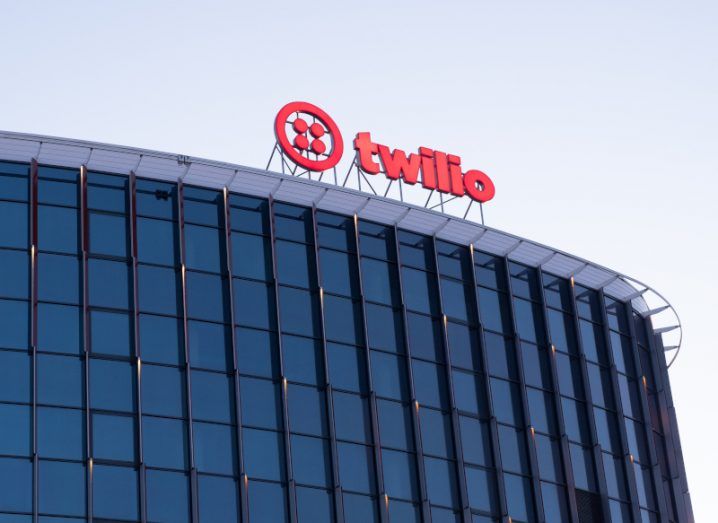
Twilio Plans to Cut 17 Percent of Staff in 2nd Wave of Layoffs
Twilio plans to cut 17 percent of staff in 2nd wave of layoffs, a move that signals the ongoing struggles of the tech industry in a challenging economic climate. This latest round of layoffs comes just months after Twilio announced a previous round of job cuts, highlighting the company’s efforts to adapt to a rapidly changing market.
This move has sent ripples through the industry, prompting questions about the future of the tech workforce and the overall health of the communications sector.
Twilio’s announcement follows a trend of tech companies downsizing in response to economic headwinds and a shift in consumer spending. The company’s decision to cut jobs is likely a reflection of its need to streamline operations and improve profitability.
While the layoffs will undoubtedly have a significant impact on affected employees, the move also raises concerns about the long-term implications for the tech industry and the future of work.
Twilio’s Layoff Announcement

Twilio, a cloud communications platform company, announced its second round of layoffs in 2023, affecting 17% of its workforce. This decision comes as the company grapples with a challenging economic environment and a need to streamline operations.
Previous Layoff Round and its Impact
The previous layoff round occurred in September 2022, when Twilio cut 11% of its workforce, citing the need to adapt to a changing economic landscape. While the company initially reported positive financial results after the first round of layoffs, its stock price has continued to decline, reflecting investor concerns about the company’s growth prospects.
The first round of layoffs led to a decrease in operating expenses and a slight increase in profitability, but the company still faces challenges in achieving sustainable growth.
Twilio’s Current Financial Situation
Twilio’s revenue growth has slowed in recent quarters, with the company reporting a 19% year-over-year increase in revenue for the first quarter of 2023. While this is still a significant growth rate, it is a slowdown from the 45% growth rate the company achieved in the same period last year.
The company has also faced pressure on its profitability, with its operating margin declining in recent quarters. This decline in profitability is partly attributed to the company’s investments in new products and services, which are yet to generate significant revenue.
Impact of the Layoffs on Twilio’s Future
The layoffs are expected to help Twilio reduce its operating expenses and improve its profitability. The company aims to achieve a more streamlined and efficient organization, allowing it to focus on its core business and prioritize growth in strategic areas.
The layoffs are also a signal that the company is taking steps to adapt to the current economic environment and ensure its long-term sustainability.
Impact on Employees and the Industry

Twilio’s recent decision to cut 17% of its workforce, marking its second round of layoffs in less than a year, has sent shockwaves through the company and the tech industry as a whole. This move reflects the challenging economic climate and the ongoing adjustments within the tech sector.
The impact of these layoffs extends beyond financial implications, affecting the lives of employees and shaping the future of the workforce.
It’s a tough time for tech companies, with Twilio joining the growing list of those making cuts. The news of their second wave of layoffs, this time affecting 17% of their staff, is a stark reminder of the economic challenges facing the industry.
In a different corner of the news cycle, Donald Trump reacted to his Nobel Peace Prize nomination , claiming it was a “great thing for our country.” While the two events seem worlds apart, they both highlight the changing landscape of our times, and the need for businesses and individuals to adapt and remain resilient.
Impact on Twilio Employees
The layoff announcement has undoubtedly brought significant hardship to Twilio employees, impacting their livelihoods and personal well-being. The immediate concern is job security, with 17% of the workforce losing their positions. This translates to hundreds of employees facing unemployment and the need to navigate the job market, potentially facing increased competition for limited opportunities.Beyond the immediate financial consequences, the psychological impact of job loss can be profound.
Employees may experience feelings of uncertainty, anxiety, and stress. Navigating the transition from a stable job to unemployment can be emotionally taxing, requiring individuals to adapt to a new reality and potentially face challenges in finding suitable employment.
Implications for the Tech Industry
Twilio’s layoffs reflect a broader trend in the tech industry, where companies are responding to economic uncertainties and adjusting their workforce to align with evolving market conditions. The global economic slowdown, coupled with rising inflation and interest rates, has impacted tech spending, forcing companies to reassess their priorities and make difficult decisions.The layoffs highlight the cyclical nature of the tech industry, where periods of rapid growth are often followed by periods of consolidation and restructuring.
This trend underscores the need for agility and adaptability in the tech workforce, as individuals need to be prepared for potential shifts in the job market.
It’s tough to see companies like Twilio making such drastic cuts, especially after a previous round of layoffs. It’s a reminder that the tech industry is still navigating a challenging landscape. Meanwhile, down in Florida, they’re taking a different approach to economic challenges.
Florida is taking steps to save its endangered citrus production and protect valuable farmland from foreign buyers , which could have a positive impact on local jobs and the agricultural industry. It’s interesting to see these contrasting approaches to economic challenges, both in the tech world and in traditional industries like agriculture.
Comparison with Other Tech Layoffs, Twilio plans to cut 17 percent of staff in 2nd wave of layoffs
Twilio’s layoff strategy shares similarities with other tech companies that have undertaken workforce reductions in recent months. Companies like Meta, Amazon, and Microsoft have announced significant layoffs, reflecting a shared response to the challenging economic environment.However, there are also differences in the approaches taken.
The news of Twilio’s second wave of layoffs, cutting 17% of their staff, is a stark reminder of the turbulent economic landscape. It’s a far cry from the “hair today, gone tomorrow” antics of protesters gathering at the SF home of Nancy Pelosi, hanging up hair curlers after her salon visit.
While that incident might seem trivial, it reflects a broader disconnect between the realities of economic hardship and the perceived privilege of certain individuals. Twilio’s layoffs are a tangible example of this disconnect, highlighting the need for more empathetic and responsible leadership in times of crisis.
While some companies have opted for large-scale layoffs across multiple departments, others have focused on specific areas or teams. Twilio’s decision to conduct two rounds of layoffs within a short period highlights the ongoing need for adjustments and the potential for further restructuring within the company.
Twilio’s Business Strategy and Future Plans
Twilio’s recent layoffs, while a painful measure, are a strategic move aimed at aligning the company’s resources with its long-term goals. The company is focusing on streamlining operations and prioritizing key growth areas, aiming to emerge as a more efficient and agile player in the evolving communications technology landscape.
Twilio’s Business Strategy and the Layoffs
The layoffs are a reflection of Twilio’s commitment to achieving profitability and sustainable growth. The company has been facing challenges in recent years, including slowing revenue growth and a decline in stock price. These layoffs are part of a broader restructuring effort to reduce costs and optimize resources.
“The decisions we made today are difficult but necessary to ensure Twilio’s long-term success,” said Jeff Lawson, CEO of Twilio. “We are committed to investing in our core businesses and emerging growth areas.”
Twilio’s strategy is centered around its core business of providing cloud-based communication solutions. The company is focused on expanding its customer base, particularly in the enterprise market.
Twilio’s Restructuring and Streamlining Operations
Twilio is streamlining its operations to focus on its core strengths and optimize its resources. This includes:
- Prioritizing Key Growth Areas:Twilio is investing in areas with high growth potential, such as customer engagement, security, and artificial intelligence.
- Streamlining Product Portfolio:The company is consolidating its product portfolio to focus on its most successful and strategic offerings.
- Reducing Costs:The layoffs are a significant step in reducing costs and improving operational efficiency.
Twilio’s Potential Areas of Growth and Investment
Twilio’s future plans are focused on key areas of growth and investment, including:
- Customer Engagement:Twilio is investing in solutions that help businesses engage with their customers in a more personalized and meaningful way. This includes solutions for omnichannel communication, conversational AI, and customer journey orchestration.
- Security:As businesses become increasingly reliant on cloud-based communications, security is a top priority. Twilio is investing in solutions that enhance security and compliance for its customers.
- Artificial Intelligence (AI):AI is transforming the way businesses communicate and interact with their customers. Twilio is integrating AI into its products to enhance customer experiences, automate processes, and gain insights from data.
Twilio’s investments in these areas will help the company stay ahead of the curve in the evolving communications technology landscape.
Epilogue: Twilio Plans To Cut 17 Percent Of Staff In 2nd Wave Of Layoffs
Twilio’s decision to cut 17 percent of its staff is a stark reminder of the turbulent times facing the tech industry. While the company’s move may be necessary to ensure its long-term survival, it also highlights the challenges of navigating a rapidly evolving market.
The impact of these layoffs will be felt far beyond the walls of Twilio, prompting a wider conversation about the future of work and the role of technology in a changing world. As the tech sector continues to grapple with these challenges, it will be interesting to see how companies like Twilio adapt and navigate the path forward.






